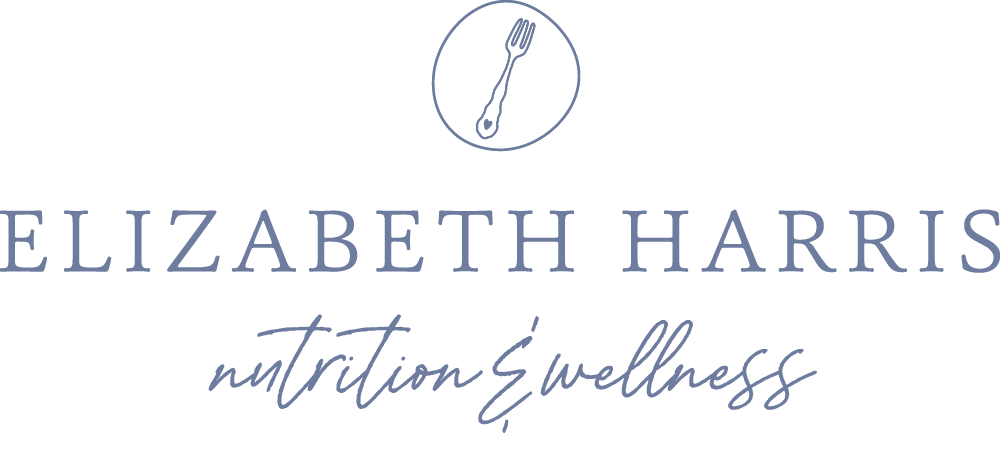15 Ways to Get More Fiber in Your Daily Diet
I just read a new study that looked at types of fiber intake, inflammation, and cardiovascular risk in more than 4,100 older adults. Researchers found that higher intakes of cereal fiber, in particular, was linked with reduced inflammatory markers and lowered risk of developing heart disease.
Their data showed that the changes in inflammatory markers had only a modest impact on the findings, meaning that other benefits of consuming fiber likely also contributed to its link with decreased cardiovascular risk. The study's authors pointed to fiber’s impact on blood sugar regulation, lipid levels, and the gut microbiome as further explanation.
This is only one small study that shows an association between fiber intake and heart health but I want to highlight it for you for 2 key reasons. Then, I'll share a bunch of ideas for HOW you can easily and enjoyably increase your fiber intake!
Important Points of a Recent Fiber Intake Study
Key Point #1: The Type of Fiber Consumed Matters
This study looked at the types of fiber consumed (cereal, vegetable, or fruit) and specifically highlighted the potential cardiovascular benefits of cereal fiber.
I’m always telling you that dieting behaviors are generally not the same thing as health-promoting behaviors, and this study underscores that point! So many diets will tell you to cut out carbs, especially bread, pasta and rice.
Well, guess what? Those are all cereal fibers—exactly the ones this study highlights. Here’s the bottom line: bodies need carbs and VARIETY is an important nutritional consideration. Yes, we need fruits and vegetables for many reasons, including their fiber intake. But we also need a wide assortment of other foods including cereal fibers, especially whole grain ones found in bran, barley, brown rice, oats, whole grain pastas, breads, and others, to best meet our nutritional needs.
Key Point #2: Fiber Intake is Linked with Health Benefits
Study after study highlights the overall health benefits of dietary fiber, linking it with reduced incidence of certain types of cancer, better blood sugar regulation in diabetes, improved cholesterol management, constipation prevention, and more. Plus, fiber helps keep you feeling full and satisfied for longer periods of time. This means it can help you cut back on excessive snacking or grazing throughout the day. (Side note: I know diet culture loves to bash snacking so let me just say there's nothing wrong with snacks—on the contrary, healthy snacks are another opportunity to meet your daily nutritional needs!)
And yet, most Americans fall far short of the recommended daily fiber intake, which is around 25 grams for women and 38 grams per day for men between the ages of 19 and 50 years old. Needs drop slightly after that.
So, let this be a gentle nudge to consider your fiber intake. 💕 Are you getting enough fruits, vegetables, whole grains, legumes, nuts and seeds in your diet? If not, I’ve pulled together 15 ideas to help you get more of these fiber-rich foods into your meals and snacks below.
15 Ways to Increase Your Fiber Intake:
Toss some rinsed and drained canned beans on top of salads or into soups.
Eat the skins on things like peaches, nectarines, apples, pears, baked potatoes, and sweet potatoes.
Have a side of berries or other fruit with breakfast.
Mix vegetables into your eggs—greens, bell peppers, spinach, mushrooms, tomatoes, and onions all work well.
Look for whole grain breads, waffles, or pancake mix (hint: the first ingredient should say whole grain).
Experiment with various whole grains, including bulgur, farro, barley, quinoa, wild rice, whole grain pastas—you can make a grain or pasta salad, add them to soups or stews, or drop a scoop on a salad.
Edamame with sea salt makes a great snack.
Try a breakfast of overnight oats and top it with fruit and some sunflower or pumpkin seeds or chopped nuts.
Sprinkle chia, flax, or hemp seeds on yogurt, cereal, oatmeal, or mix them into baked goods.
Set out some raw veggies and hummus to snack on as you’re cooking dinner.
Add extra veggies to your sandwiches or wraps.
Throw some greens, carrots, or riced frozen cauliflower into a smoothie.
Have some dried fruit with nuts for a quick and easy snack that travels well.
Try baking with white whole wheat, spelt, or oat flour—I find you can usually replace up to ½ of the all purpose flour with these more mild whole grain flours and not notice much of a difference in the final product.
Choose whole grain crackers such as Triscuits, wheat thins, or Wasa crackers.
One last important tip: anytime you’re increasing your fiber intake, be sure to add it in slowly and drink plenty of water to help your body break it down.
Work with a Nutrition Professional to Reach Your Health Goals
Health and wellness is an integral part of daily life and the key to high quality living. If you’d like help with reaching your own health and wellness goals without dieting or restricting what you eat, please reach out. As a non-diet Registered Dietitian Nutritionist, I help people learn how to choose nourishing, healthy foods and build lifelong healthy habits that enhance your health and wellbeing without focusing on weight loss!
Looking for another way to increase your fiber intake? Try out these Delicious Fiber-Packed Pumpkin Recipes.
